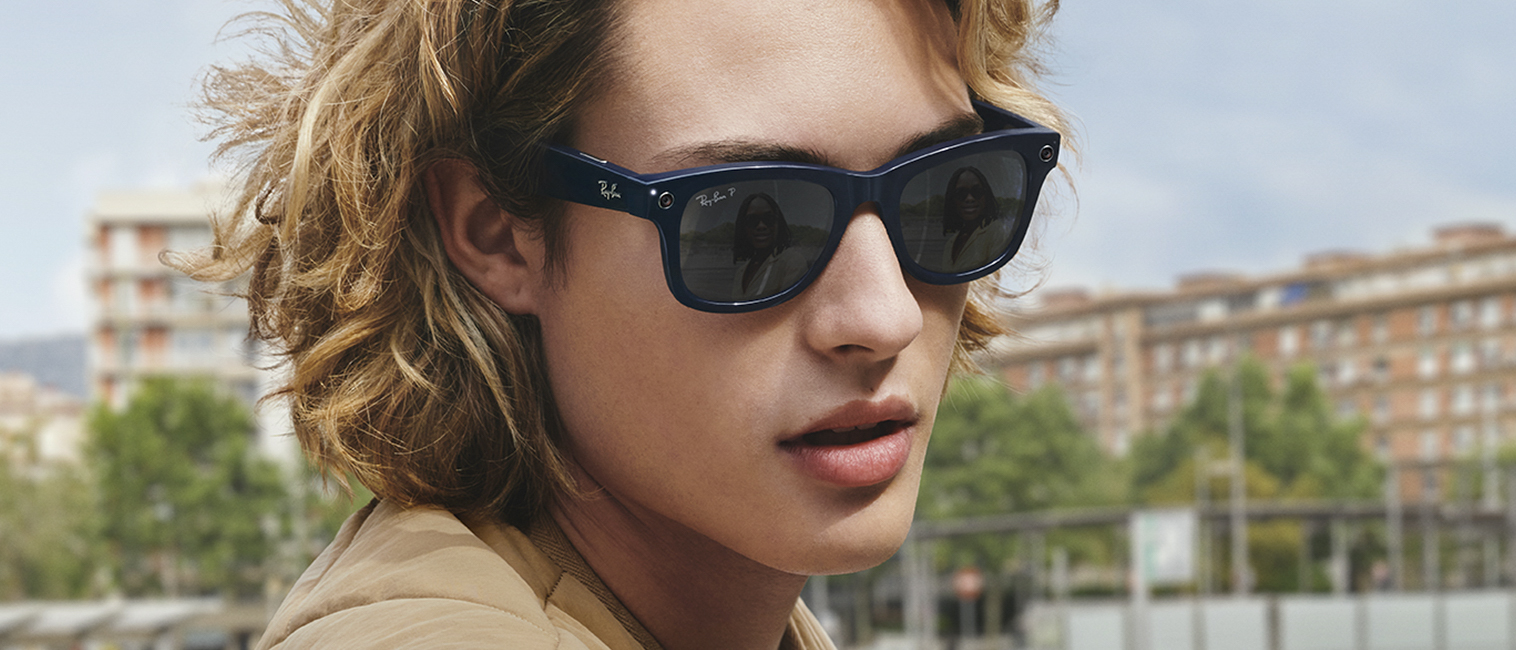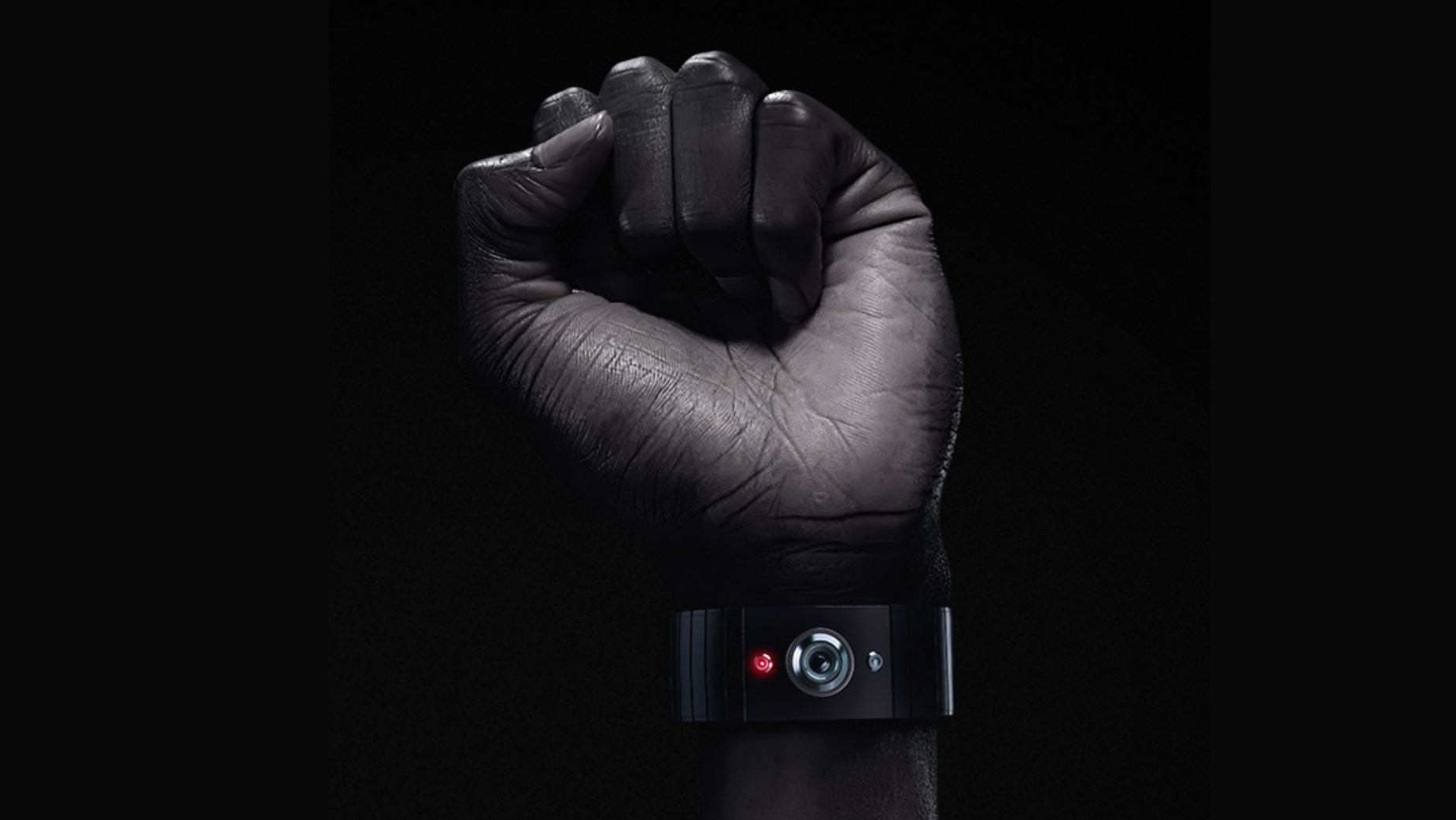Digital Camera World Verdict
The Ray-Ban Stories are hard to fault. They offer capable, if basic, image and video capture capabilities as well as built-in audio that’ll have you humming a happy tune as you walk the streets around your home. They also look great, thanks to the Ray-Ban collaboration, and the option to pack in prescription lenses overcomes a common problem for those with vision problems – namely, you can’t easily wear smart glasses over your regular glasses.
Pros
- +
Built-in 5MP cameras
- +
Stylish sunglass design
- +
Wide choice of frame and color options
- +
Available with prescription lenses
Cons
- -
More expensive than regular sunglasses
- -
Privacy issues may worry some
Why you can trust Digital Camera World
The Ray-Ban Stories smart glasses are just the start for Meta (previously Facebook), whose ambitions in the world of augmented and mixed reality are well known. The Ray-Ban Stories may not be AR glasses in the truest sense, instead offering built-in audio, dual-lens camera recording, and a sleek Ray-Ban frame available in a medley of shapes and colors – with more ambitious AR features likely coming in future models.
There’s more than a touch of the Snap Spectacles about them (sorry Snap), but the fashion credibility granted by this Ray-Ban collaboration could mean we see a lot more Stories out on the go.
Some may balk at the idea of having a Meta-made camera on their face at all times, and any users need to be wary of privacy concerns – though we can’t fault these glasses when it comes to the quality or usability of the hardware.
Ray-Ban Stories: specifications
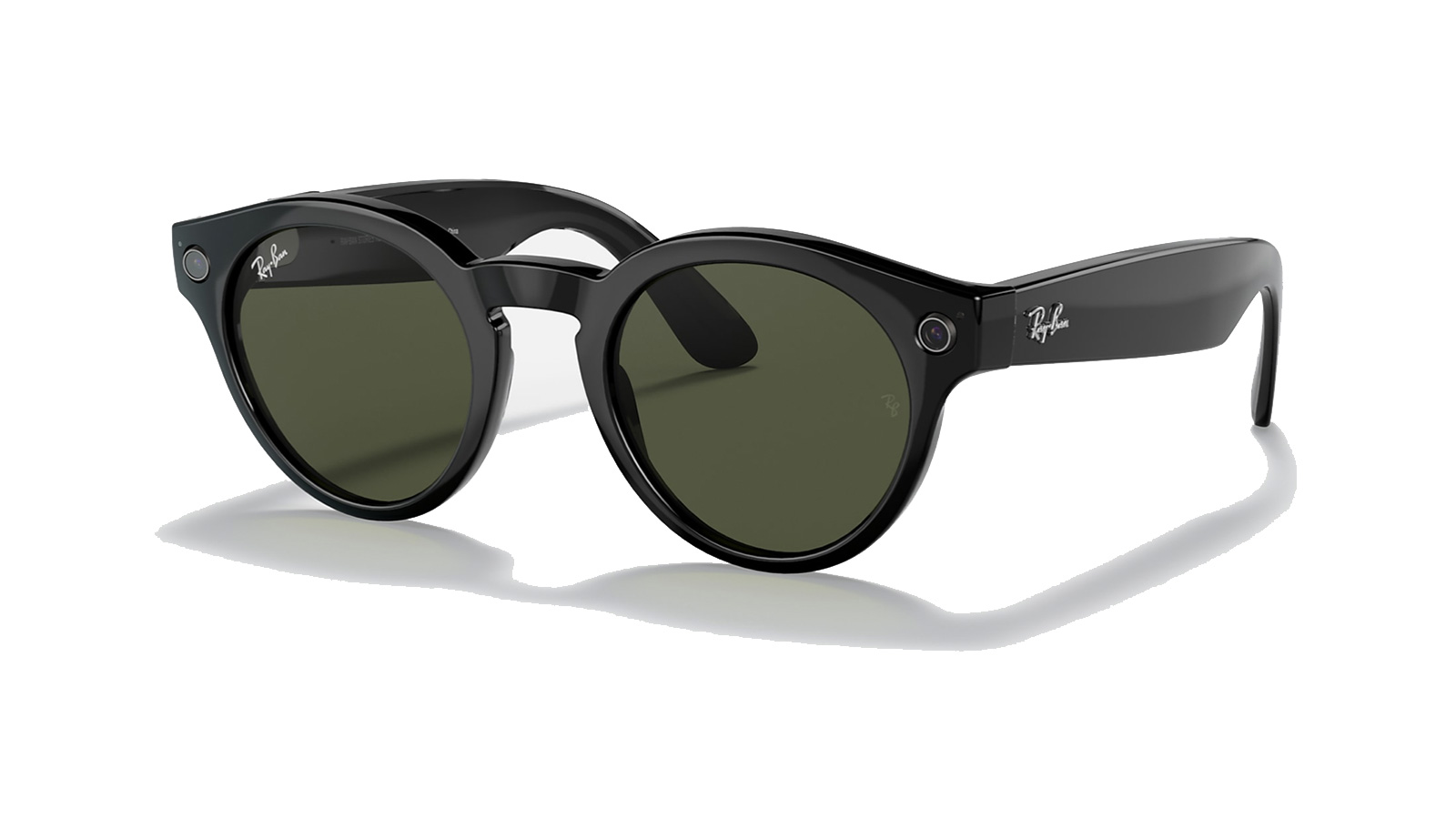
Pricing: $299 / £299 / AU$449
Battery: 3 hours
Memory: 4GB flash storage
Speakers: x2 speaker open air
Camera: Dual 5MP cameras
Photo resolution: 2592x1944 pixels
Video resolution: 1184x1184 pixels at 30 frames per second
Dimensions in mm: 41.2 (height), 50 (width), 22 (bridge width), 150 (temple length)
Key features
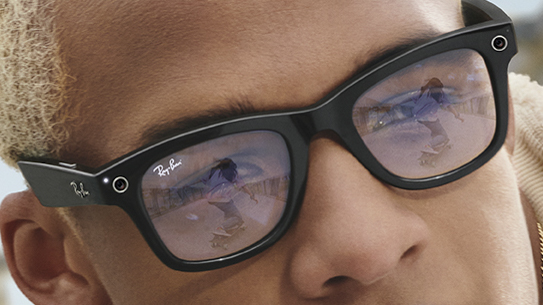
At first glance, the Ray-Ban Stories are like any aviators you might find sold by the lifestyle brand. Look closer, though, and you’ll see a full suite of modern smart features that elevate them above and beyond your average pair of sunglasses.
First, the camera. There are two 5MP lenses, built into opposing ends of the glasses to get a sense of depth in your images. They’re not stunning quality compared to the cameras packed into some modern smartphones, but the ease of taking photos on the go is the real draw here. Photos are captured at 2592x1944 pixel resolution, whereas more taxing video capture drops to 1184x1184 pixels (30 frames per second) instead.
There is a color indicator on the front of the glasses, which lights up when camera recording is in use. That’s a handy feature when it comes to letting those around you know you’re recording, but it’s important to respect the privacy of others at the same time, given these smart glasses aren’t ubiquitous or readily-recognizable hardware just yet.
Next, the speakers. There are two open-air drivers that are placed near where your ears will be, allowing you to listen to music without having to stick headphones in, on, or over your ears.
Design and usability
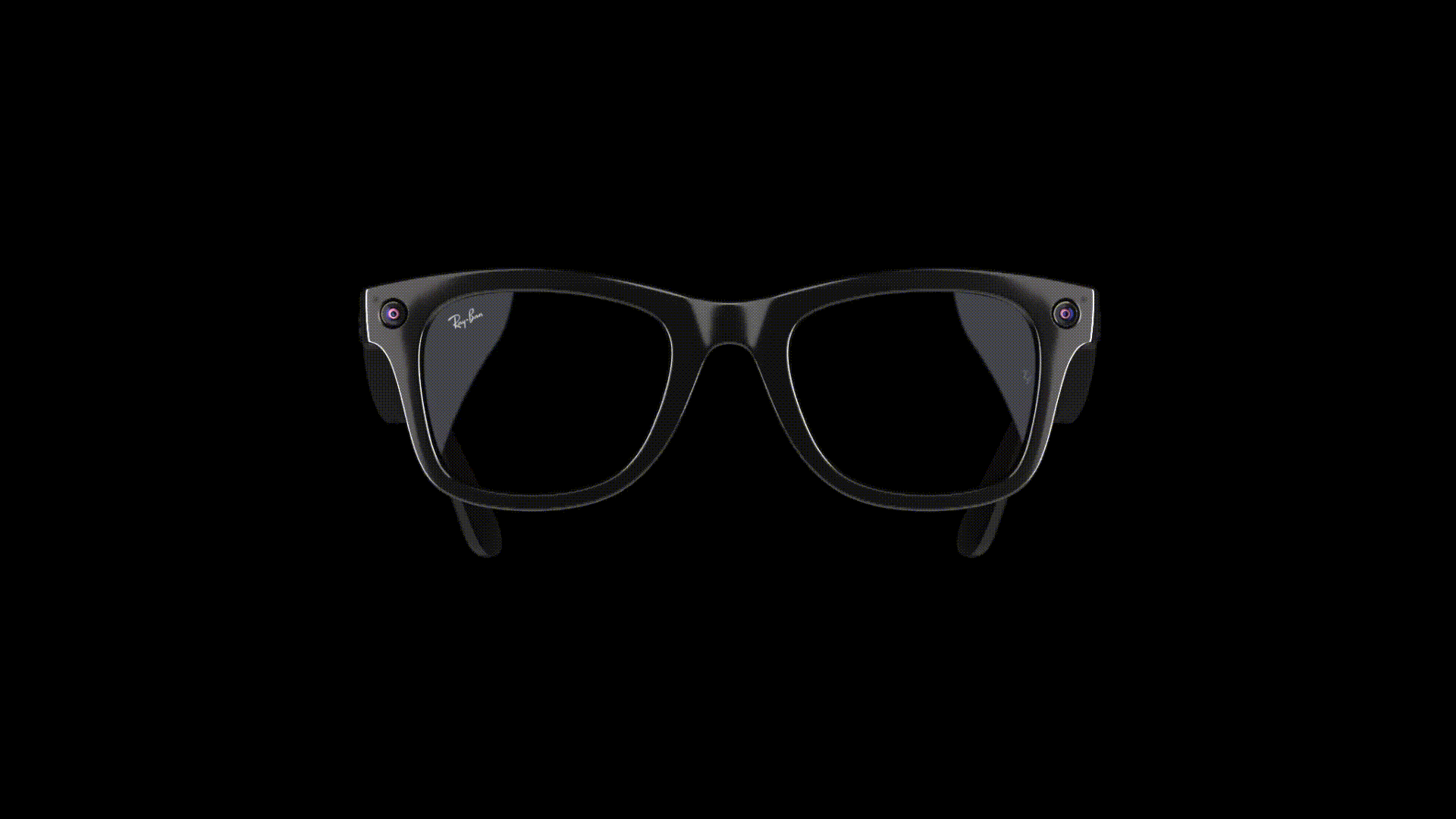
The Ray-Ban Stories are, unsurprisingly, a bit heavier than standard glasses, given the technology that needs to be packed into the Stories’ frame: speakers, camera lenses, and a rechargeable battery.
However, they’re still relatively light, and fine to wear for long periods of time. When not in use, they function like any pair of Ray-Ban glasses, whether that’s solely as a fashion accessory or something more urgent, with options for prescription lenses, transition lenses, or straightforward sunglasses to protect your eyes in sunny weather. The 20 combinations of lenses, colors and styles (Wayfarer, Wayfarer Large, Round, and Meteor) mean there’s plenty to differentiate yourself, too.
The charging case for the Stories is, again, just a bulkier version of a standard spectacles case, with a built-in battery that charges via a USB-C port, and which offers a total three hours of usage – so don’t expect these smart glasses to keep recording into the long hours.
These glasses connect via Bluetooth to a smartphone, and you’ll need Android 8.1 – or iOS 13 on an iPhone 6S and above – at a minimum. The required Facebook View app is pretty bare for the company behind Facebook and Instagram, with hardly any image editing capabilities, to the point where we wouldn’t really bother using them. It’s far simpler to share those images directly with a social media app, which will have better in-app editing software.
Performance
Walking around our neighborhood with the Ray-Ban Stories on a summer’s day offers no immediate problems.
Taking photos or videos is as simple as pressing a button, though the Stories’ touch slider can be easily activated by accident when taking the glasses on and off – you know, with your hands? So expect the odd blurred photo in your phone’s image library, which the Stories will connect to over Bluetooth to maintain a steady stream of content as you go about your day.
Image capture is largely a breeze, though, while blur reduction during video recording is impressive, ensuring movement stays at a smooth 30 frames per second – a good thing, too, as the Stories would be destined for the dustbin otherwise.
The built-in audio can have some distortion, and doesn’t pack in a huge amount of detail – likely a mix of average driver detail and sound being lost to the air. But it feels like an appropriate tradeoff given how pleasurable it is to walk around with hands-free, and ears-free audio, keeping you aware of your surroundings.
Ray-Ban Stories: Verdict
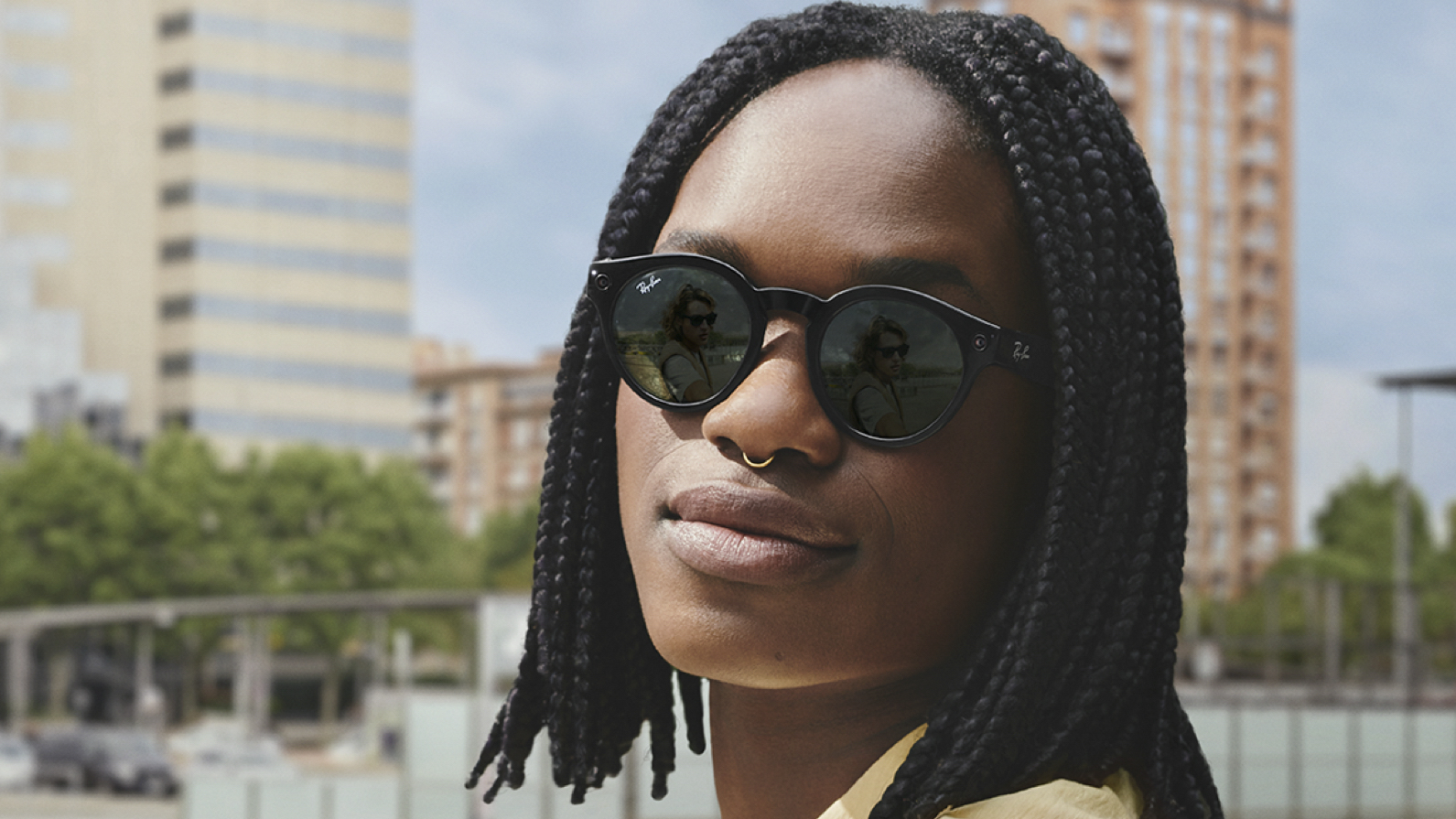
The Ray-Ban Stories are hard to fault. They offer capable, if basic, image and video capture capabilities as well as built-in audio that’ll have you humming a happy tune as you walk the streets around your home. They also look great, thanks to the Ray-Ban collaboration, and the option to pack in prescription lenses overcomes a common problem for those with vision problems – namely, you can’t easily wear smart glasses over your regular glasses.
We’d hope to see an improved app experience down the line, given the bare launch software, though issues are easily sidestepped by doing the bulk of image or video editing in other apps on your phone.
One important thing to consider, though, isn’t just the quality of the glasses, but privacy around the device. They could, in the wrong hands, act as discreet surveillance, and the indicator and startup sound activated during recording will be less noticeable in busy or loud environments.
Privacy concerns run both ways too. The Facebook View app is, for some reason, permanently active on your phone, even after closing it; the company says it’s to monitor necessary Bluetooth, Wi-Fi and battery life data, though it’s worth asking whether you’re comfortable with that state of affairs.
Read more
Best VR headset
Best night-vision goggles
Best body cameras
Best helmet cameras
Henry is a freelance technology journalist. Before going freelance, he spent more than three years on TechRadar reporting on TVs, projectors and smart speakers as the website's Home Cinema Editor – and has been interviewed live on both BBC World News and Channel News Asia, discussing the future of transport and 4K resolution televisions respectively. As a graduate of English Literature and theater enthusiast, he'll usually be found forcing Shakespeare puns into his technology articles, which he thinks is what the Bard would have wanted.
